
Multi-sport watches like the Suunto 5 have been steadily gaining steam over the past few years. Given the different types of fitness we all tend to engage in on a weekly basis, it’s easy to understand why someone would want a fitness watch that tracks absolutely everything. From swimming to hiking and biking, your heart-rate 24/7 and your sleep, the Suunto 5 can track it.
With this type of data, the Suunto 5 gives you a better idea of your overall health. It’s a GPS sports watch with over 80 different types of exercise you can track. It has long battery life, a useful adaptive training schedule built in, and it’s a nice looking timepiece that doesn’t scream “fitness watch.”
Here’s my look at the Suunto 5, what I thought of how it works, and how it could work for you.
Design and features of the Suunto 5 GPS Watch
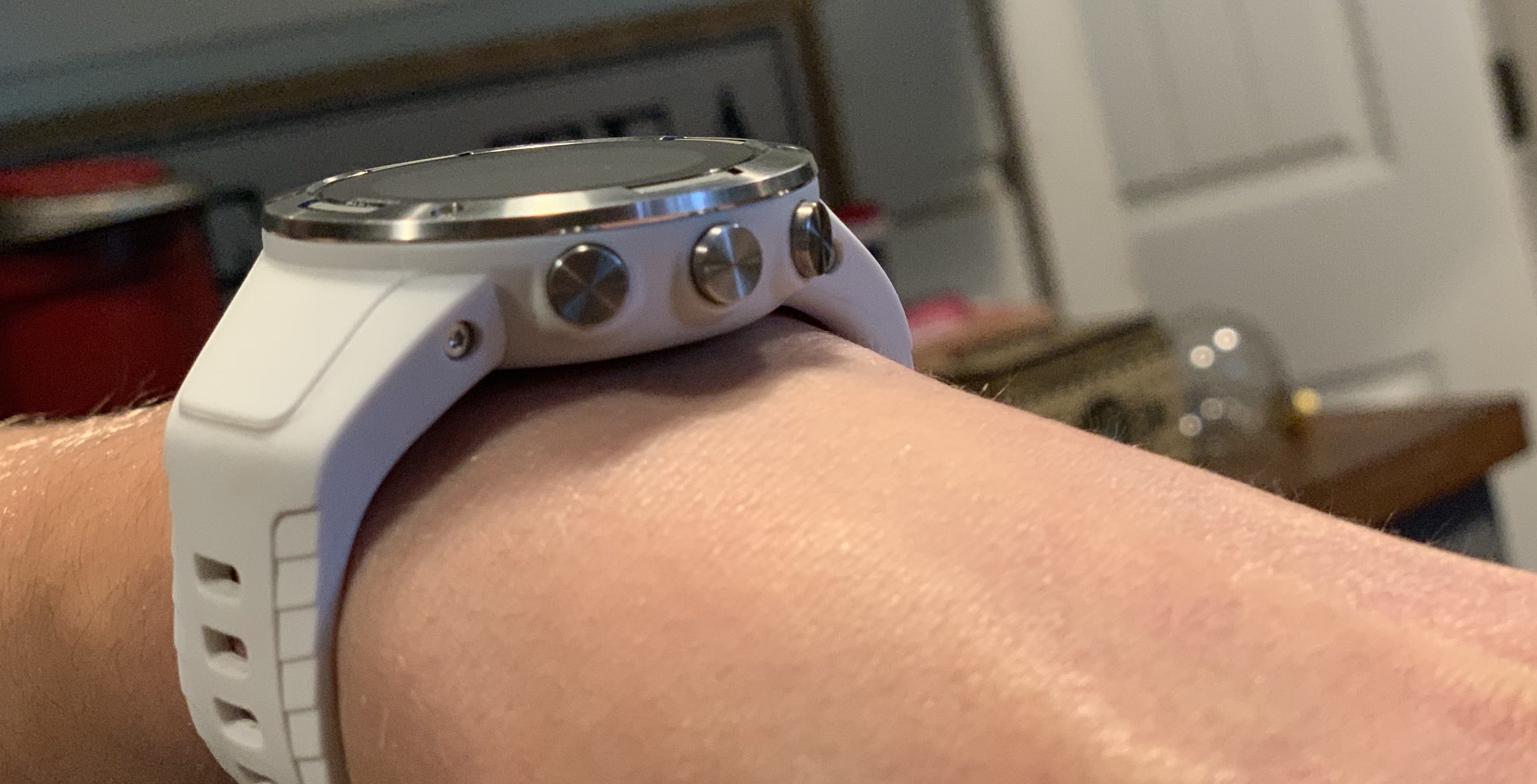
The Suunto 5 is a weighty timepiece. When I pulled it out of the box and held it for the first time my impression was that it was comparable to some of the watches my husband tends to collect. He likes chronograph watches with a large watch face, and it’s even better if the design includes a stainless steel bezel and glass screen. The Suunto 5 style is definitely in his wheelhouse, so much so that he insisted on strapping it on himself and testing it out too.
But the Suunto 5 is no standard chronograph watch; it’s a GPS watch designed to track multiple different sports. Those sports include swimming, and the Suunto 5 has a wide silicone band to keep your wrist dry during your every sweaty activity.
I found the watch strap to be quite large on my wrist, but it looked great on my husband. The strap didn’t chafe when I wore it running, but it felt quite wide and not as flexible as some of my other fitness watch straps.
Assuming you’re wearing the watch on your right wrist, there are three buttons on the right-hand side of the watch face and two on the left side. If you push the centre button it gives you a look at your battery life and date. The other two buttons toggle you through the menus, and the left side buttons exit you out of your choices. It’s easy to use the buttons once you become accustomed to them, but if you’ve already got a touchscreen watch you’ll struggle a bit. I did, but I got into the swing of things pretty quickly.
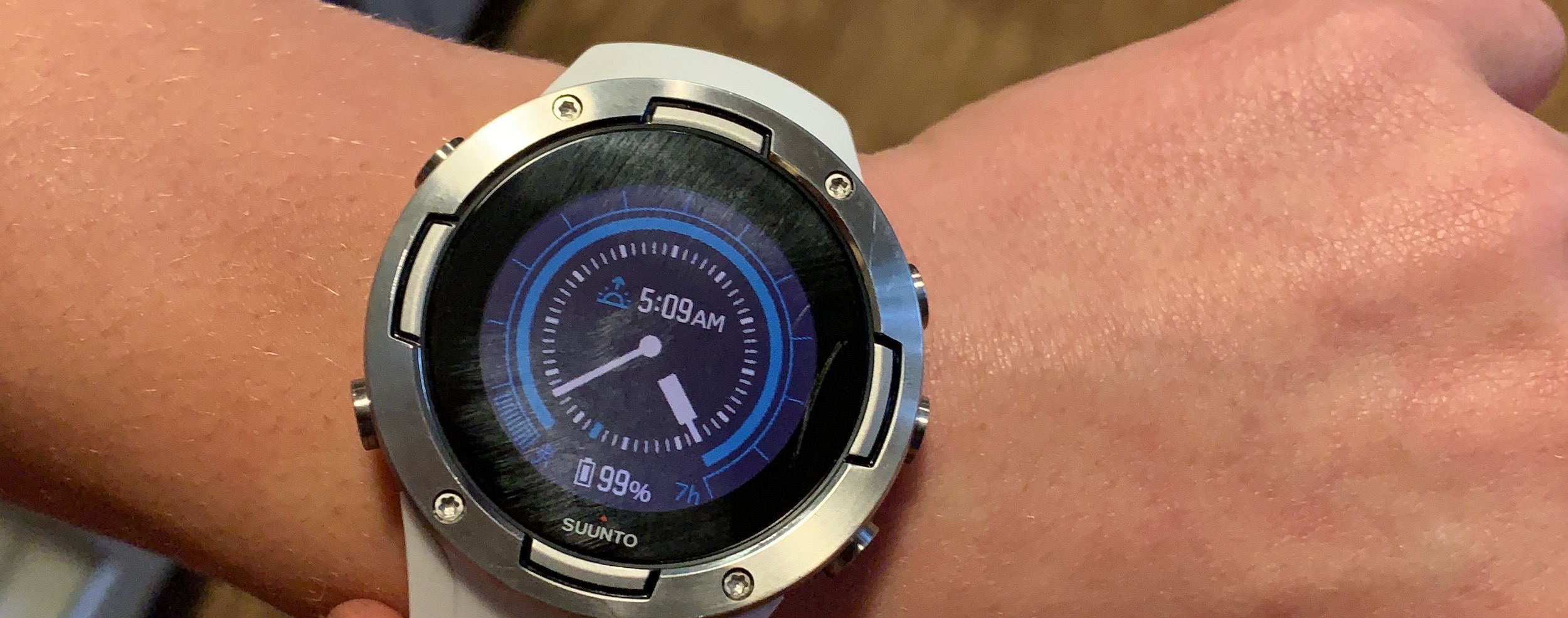
You can change the watch face right on the watch. There are several styles to choose from and you can change each to a favourite colour. The Suunto 5 also has a backlight colour display that turns on when you flip your wrist or push a button. It brightens up the screen a bit, but it doesn’t last that long. In bright light it’s definitely hard to see the screen.
I’ve tested out the Suunto Spartan Trainer, and the Suunto 5 definitely reminds me of the Spartan. The features on this watch include:
- Long battery life, and can last up to 40 hours without a charge
- Has three battery modes including performance, endurance, and custom
- Tracks your VO2 max fitness level and records your data in the Suunto app
- Offers you 80 different activities to track
- GPS tracking of all your activity
- 24/7 heart rate tracking that appears right on the watch face
- Stress tracking right on the watch so you know how long your body needs to recover from the exercise you just did
- Adaptive training plans built-in to push you to do more on a weekly basis
- Sleep tracking for a better picture of your overall fitness
- Easily syncs and offers comprehensive fitness data on the Suunto app
- Syncs with apps like Strava
- Water resistant up to 50 meters
Testing out the Suunto 5

I’m a runner who does circuit training several times a week. My husband is a biker, so we took the Suunto 5 for several test spins during different activities to see how it would perform.
There are over 80 different activities you can track using the Sunnto 5. I was glad to see weight training and circuit training, and there’s also hiking, biking, running, trekking, climbing, skiing or snowboarding, and sports like soccer and hockey. In a nutshell, if you want to track it, the Suunto 5 will offer you the option.
It’s easy to start a new exercise, and during your workout it will show you your heart-rate, calories burned, distance, time, and laps. You can tap the lower right button to indicate when you’re doing a lap and it will start the lap for you. You’ll tap it again to end the lap.
A data breakdown of your favorite activity
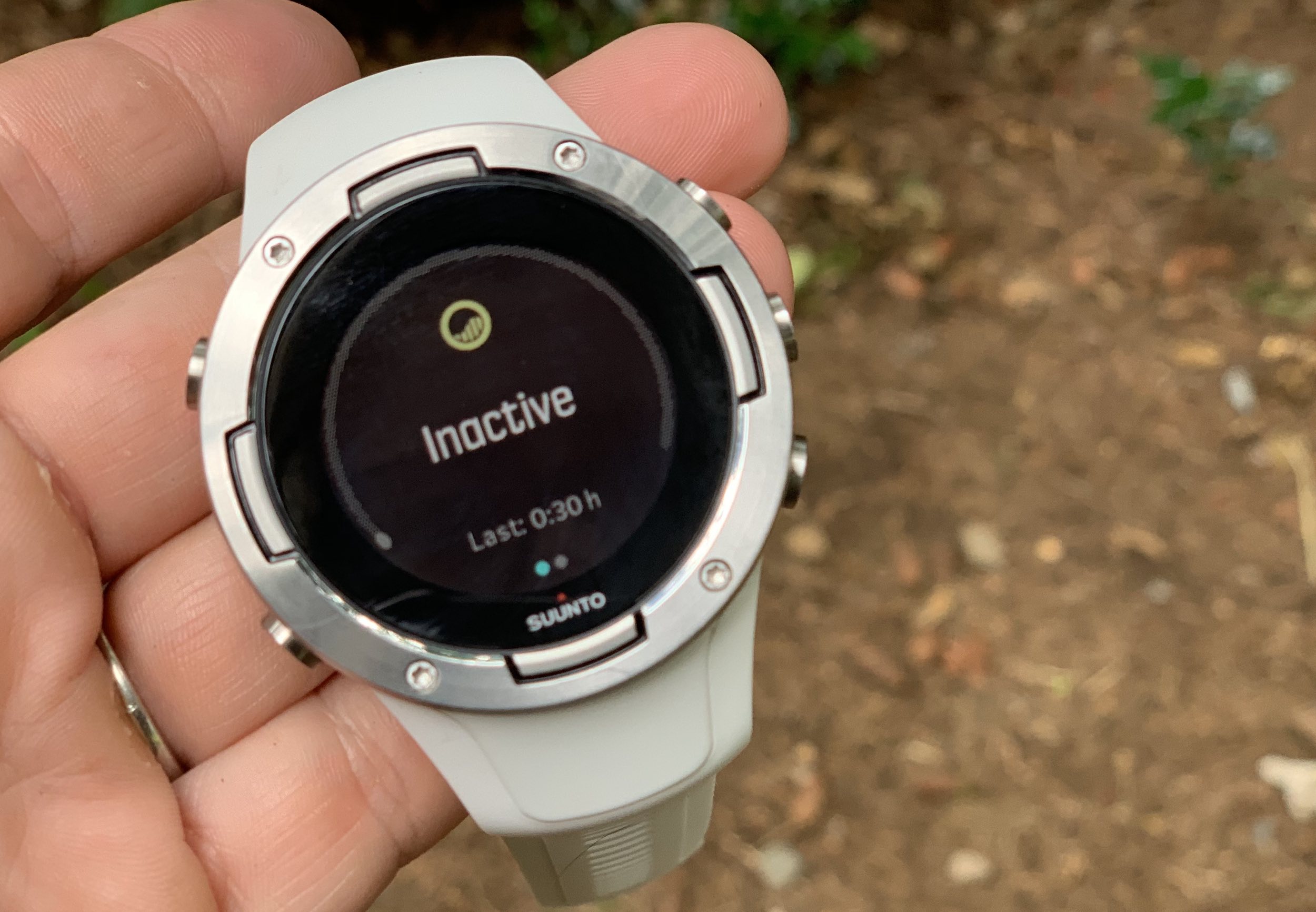
When you’re done your workout you can end it by tapping the lower left button. Once you’ve saved it you can see your stats, and there are a lot of them right on the display. The Suunto 5 tracks your time, speed, distance, heart rate during activity, and intensity zones. You’ll see a colour bar graph that shows which zone you stayed in the most.
There’s also calories burned, ascent, descent, and how long you should spend recovering from that activity. I find the recovery data very interesting. After I did a particularly intense HIIT circuit, the watch told me I would need 12 hours to recover from that workout. My husband’s mountain bike adventures only required him to wait for 2 hours for recovery.
This watch also does what many other multi-sport fitness watches won’t: it tracks your SWOLF score and stroke rate while swimming. SWOLF is a measure of your swimming efficiency, and given that the watch is water-resistant up to 50 meters, this is a great option for anyone swimming as part of their workouts.
Personalized training, right on your wrist

It’s easy to track your activity on the Suunto 5, but if you want a bit of an extra push to workout, the watch is built to motivate you. You can go into your settings and tap to turn on Personalized Training Programs. It asks you if you want to Maintain, Improve, or Boost your fitness, and you can choose one.
I choose Improve and the watch recommended I work out three hours per week with at least one intense session for 30 minutes. The Suunto 5 also has adaptive training, and it will tell you how hard you should work out next time based on what you just did. I really love this feature. It pushes you to workout harder if you were relatively slow during the current workout, and if you really pushed yourself it gives you a clear conscience to go slower next time.
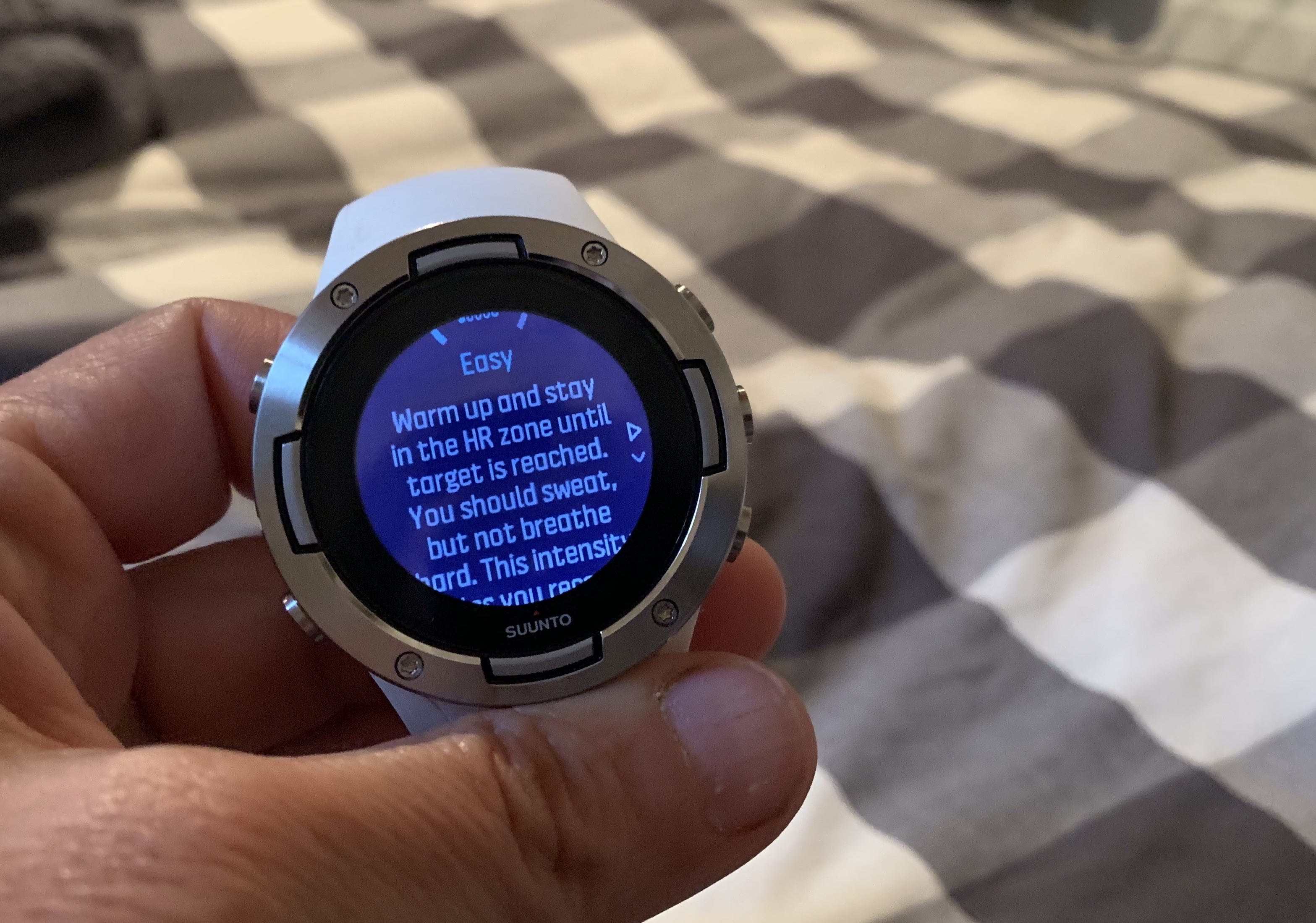
The Suunto 5 shows data I’ve never seen on fitness watches I’ve tested. It shows you your PTE (Peak Training Effect) and EPOC (Estimated Post-Exercise Oxygen Consumption). In the simplest terms, PTE is your body’s increase in performance after your workout. EPOC is the level of oxygen your body requires to recover from the workout you just did. If you scale up your workout intensity and duration over the course of a month, your PTE and EPOC should increase.
Built-in GPS follows where you go
The Suunto 5 has built-in GPS, so it can map out your trails or routes and load them to the Suunto app. Every time my husband went for a bike ride on the trails the GPS would track his ride, and having those maps means you can repeat the same route over again if you’d like to.
When I went out on a run down near my house, the GPS signal was too weak to connect. That run wasn’t logged as a map, but the watch still had all of my other stats.I generally do the same run every other day, so I’m not that concerned with logging it.
Heart rate tracking and stress on the Suunto 5

To see what your heart rate is at any given moment, just scroll down to the heart rate option and it will assess your current heart rate. It keeps a log of your daily heart rate as well as your resting heart rate, and it will offer you a read out on the current state of your body based on your current heart rate. My reading said I was stressed a few times, and I thought that was interesting given that I was indeed stressed right in those moments.
You can receive 4 different readouts for your stress levels: active, inactive, stressed, and recovering. Your read out can change every half hour. What I like about this is that it’s hard to be mindful of your body’s reaction to stress, activity, and inactivity when you’re having a busy day. The Suunto 5 will force you to focus on that stress and give you the opportunity to recover.
Both exercise and sleep will help you recover from stress, and the adaptive technology built into the Suunto 5 means you don’t get generic information about your current state. It will keep an eye on both and adjust your readouts based on your current stats every day. It’s a great feature.
Sleep tracking on the Suunto 5
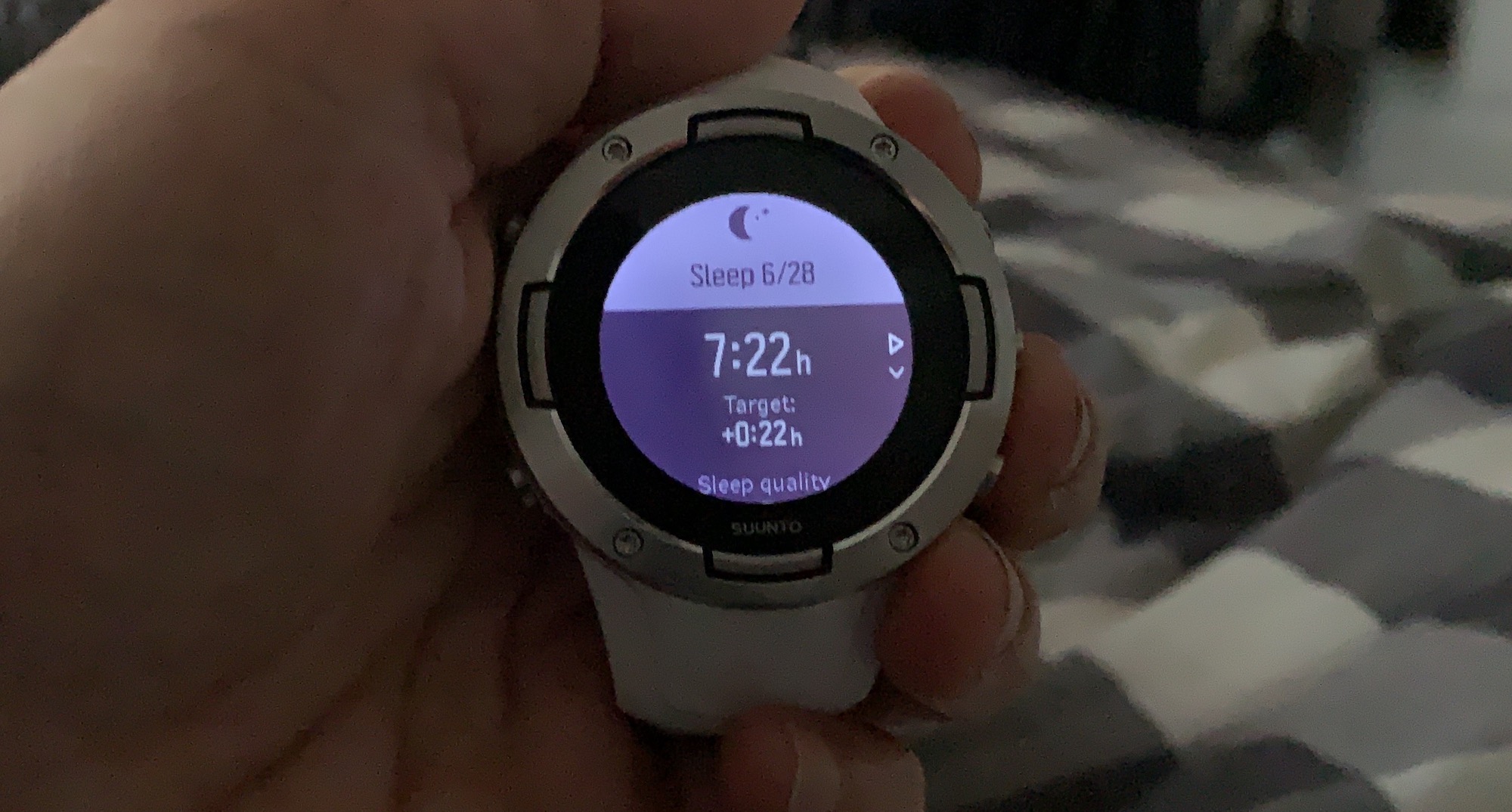
The Suunto 5 will track your sleep and offer you insights into how you slept that night. It does this by monitoring your sleep and heartbeat and offering you a sleep score that’s between 1 and 100. I tried to wear it at night but had a hard time falling asleep with it on. I usually tuck my arm underneath my head, and I found the watch too bulky to do that.
My husband had no trouble sleeping with it on, and he generally had a sleep score of 80. He thought it was pretty accurate at logging when he woke up in the middle of the night, but it didn’t catch when he fell asleep. It was about ½ hour off of when he thought he fell asleep.
Battery life on the Suunto 5 multi-sport watch
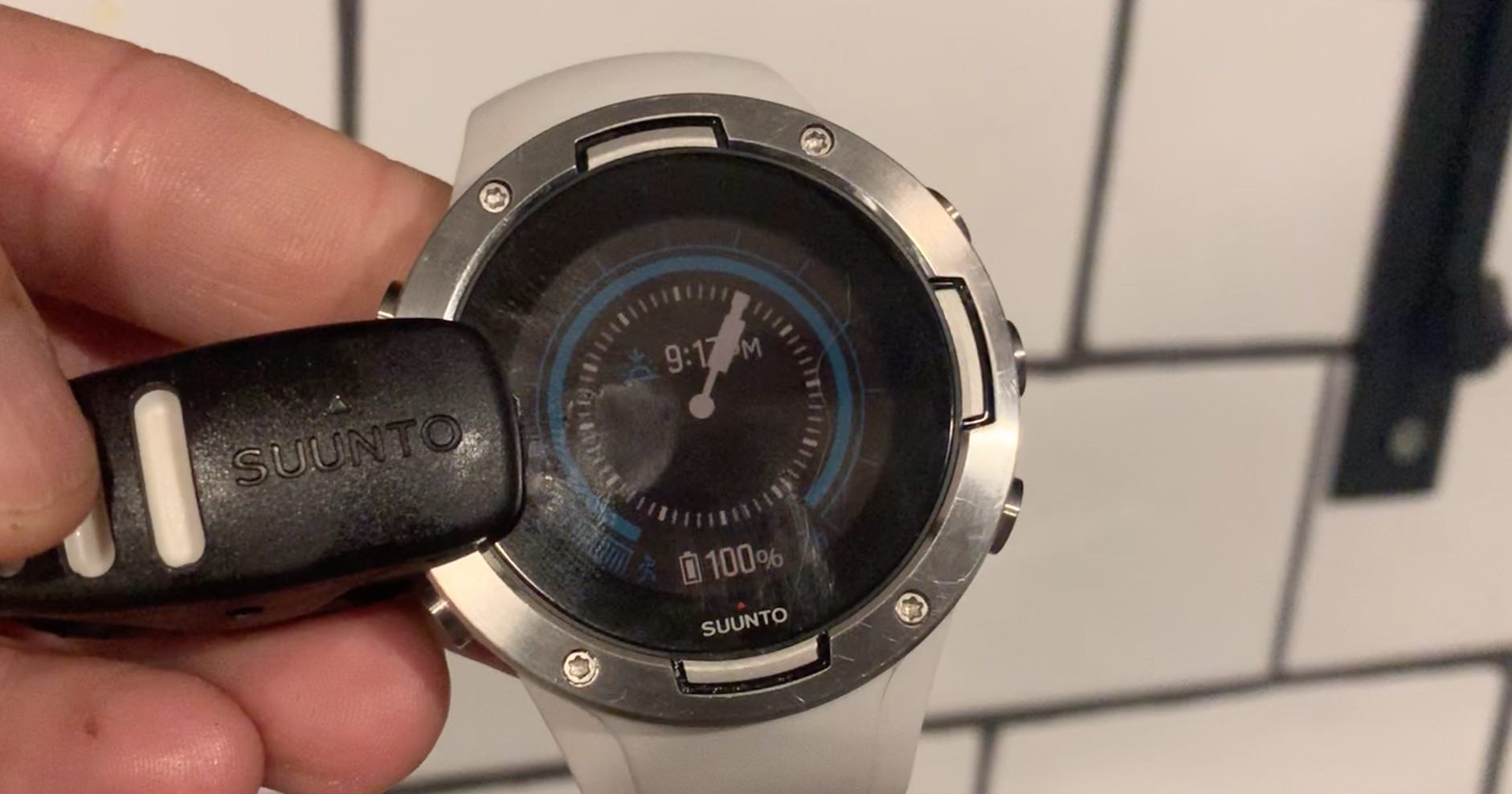
The battery on the Suunto 5 should last for about 40 hours on a single charge. It charges via a claw-style charger that connects to the watch and plugs into a USB. I left it on the charger for 2 hours and came back to a full charge.
Tracking exercise daily and using it to monitor sleep meant the battery life was a bit less than 40 hours. It was around the 34-hour mark that I put it back on the charger, but that’s definitely a long time given how it’s monitoring you at least every half hour.
Syncing with the Suunto app
Syncing your data with the Suunto app is easy when the watch connects right away. I found it dropped the connection a few times and I had to try again, but it was a speedy upload overall. In the app, there’s your entire history for workouts, sleep, and heartbeat, and you’ll also find your GPS maps.
The app isn’t as feature rich as some apps, but there’s so much data on the watch that you’ll focus on your wrist instead.
Should you buy the Suunto 5?
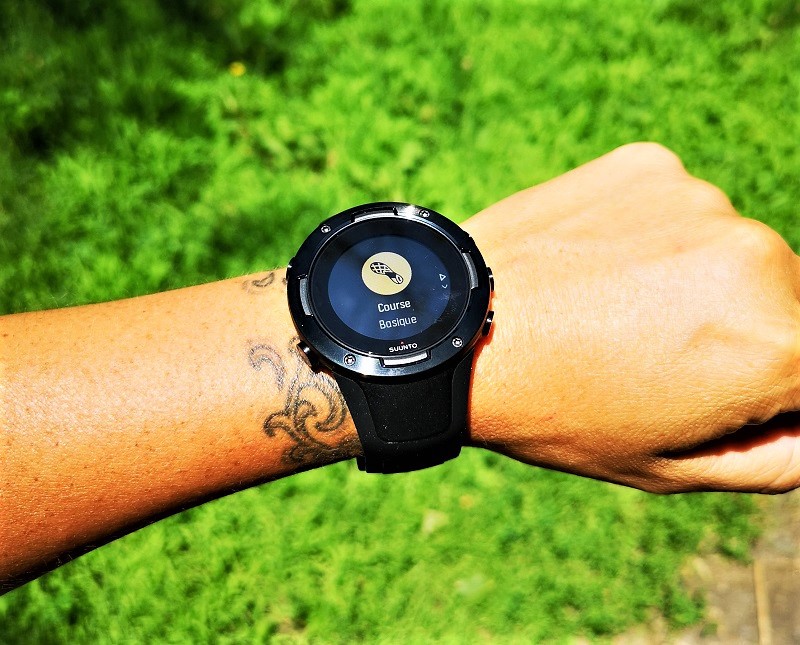
I like the Suunto 5. I’ve tested out quite a few fitness watches and smart watches and I really appreciate how the Suunto 5 has so many different types of exercises to track. It makes it easy to diversify, especially if you don’t just do one type of workout.
I found the optical heart-rate monitor to be fairly accurate, and I really liked the integration of heart-rate and workout to show you when you’re working too hard or need to step it up. The adaptive training is also incredibly useful, and it’s a good motivator when you feel like you need a boost.
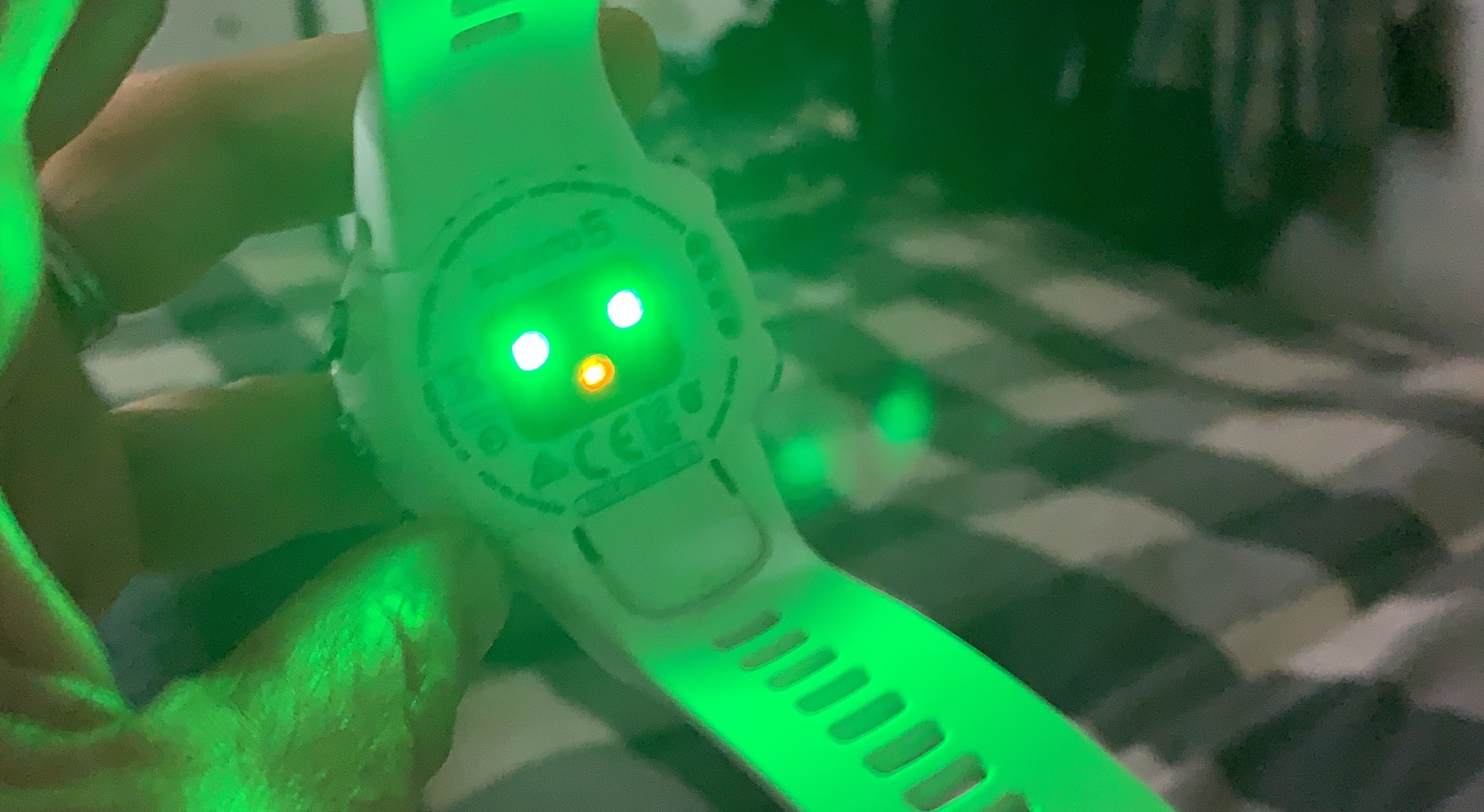
As far as design and style, I felt as though the watch was just a bit too big for my wrist. I felt as though the band was too large to wear comfortably while sleeping, but it suited my husband’s arm perfectly. He thought it was the perfect size and shape, and it didn’t affect his sleep at all.
I’m also used to a touchscreen, so the buttons on the side require thought before navigating. They’re easy to use overall, but I’d be happier with a color touchscreen.
You can check out the Suunto 5 yourself right now. It’s available on Best Buy in white and black.


